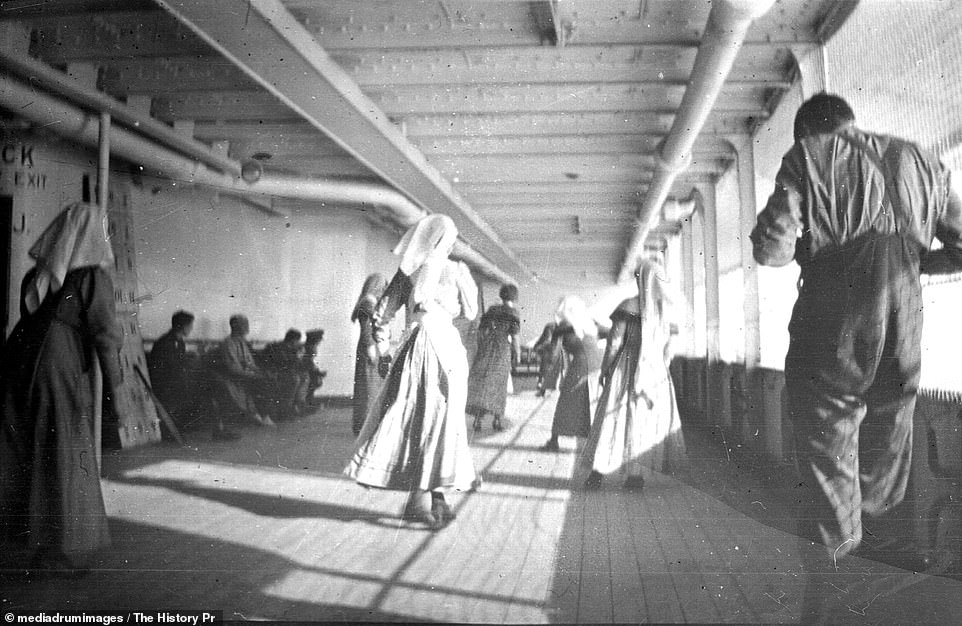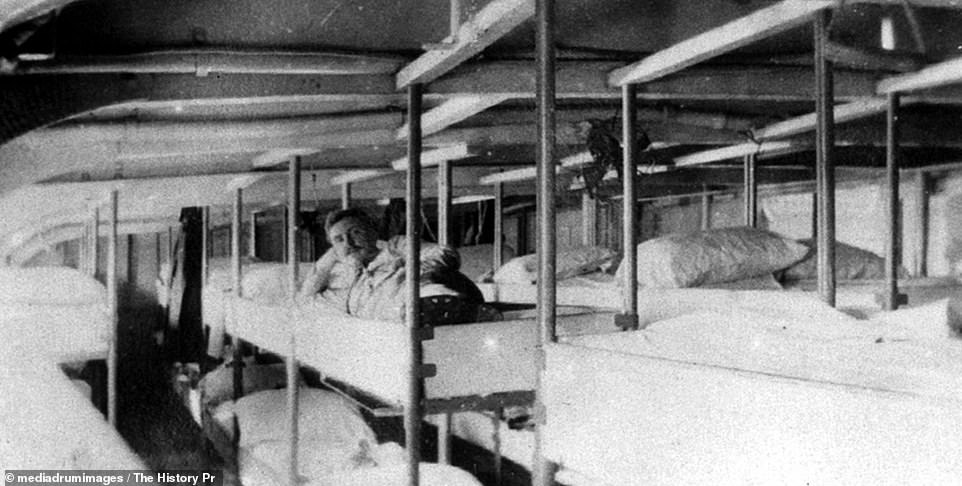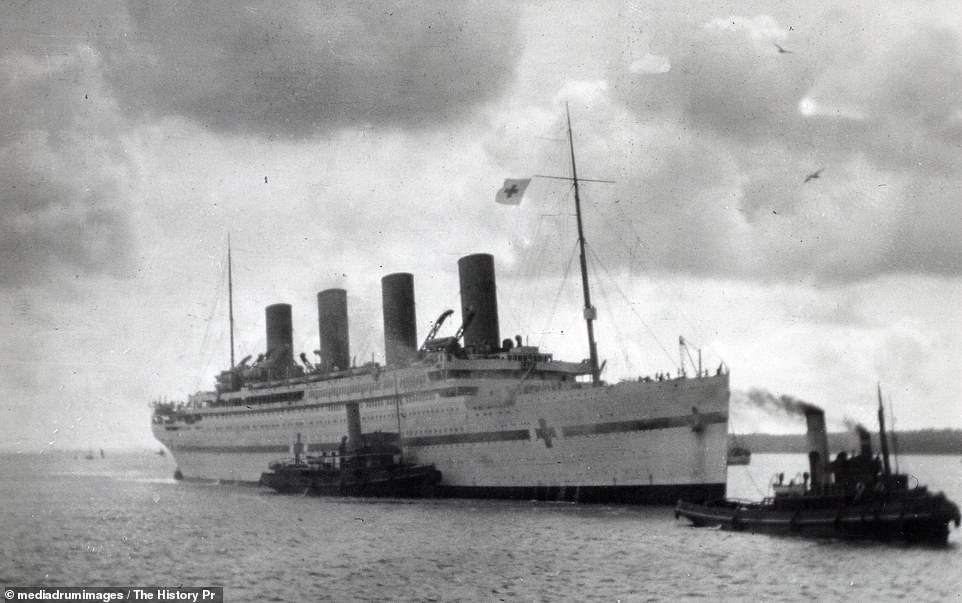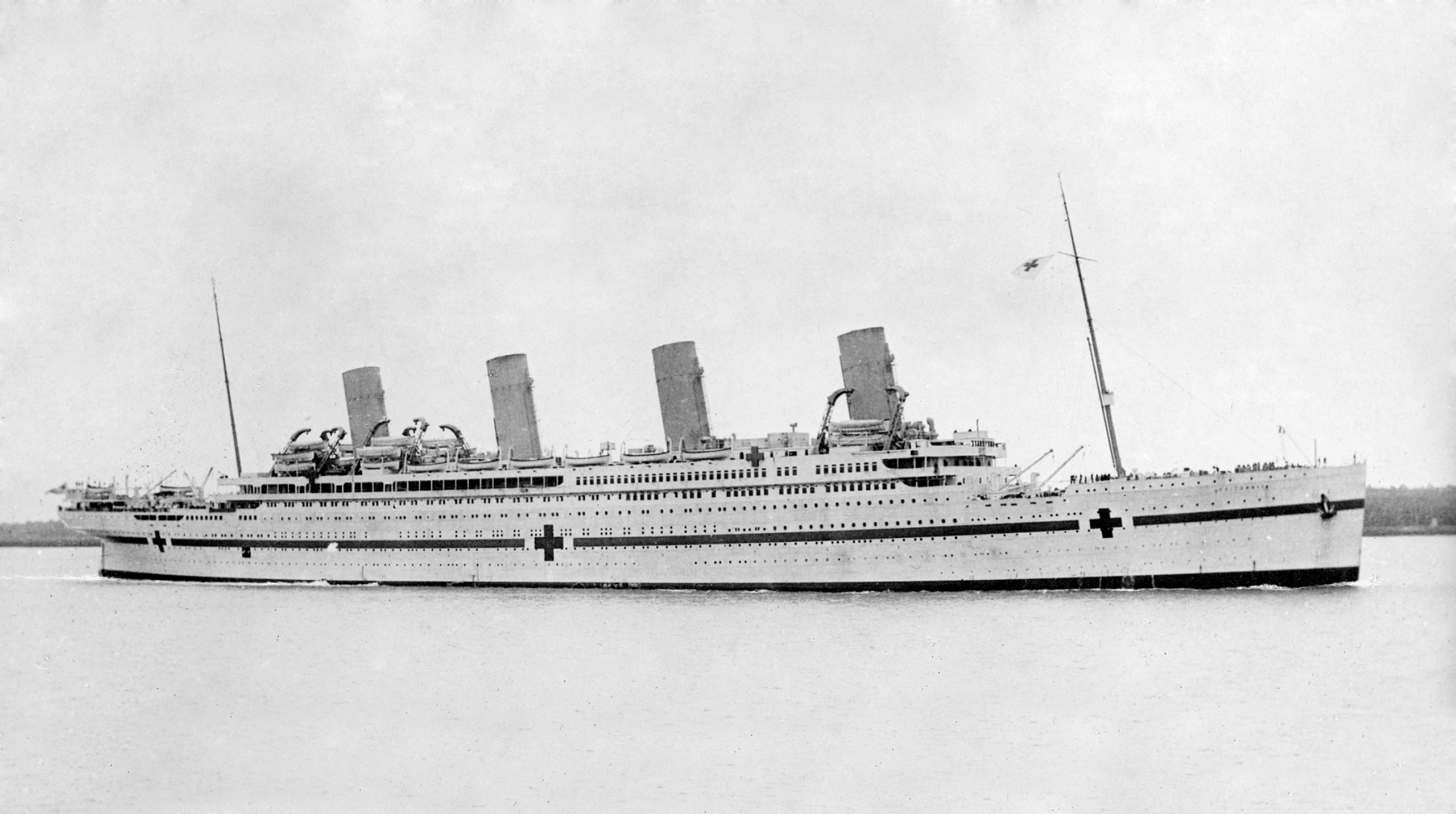The tragic demise of the RMS Titanic still haunts the world more than a century later, while after decades of faithful service, the RMS Olympic retired to its own well-deserved place in the maritime hall of fame. But for some obscure reason, the third Olympic-class liner – the HMHS Britannic – is often left to fade in the shadows of her sisters. A wartime Cinderella, she was born a princess and destined to a life of hard work, but unlike the fairytale, she never got to the ball, never saw champagne-sipping princes, nor ladies, heavy with diamonds. More impressive and technologically advanced than her predecessors, she was elbowed aside to the backwater of history – baptized and buried by a world war.
Born under a Bad Sign
Rumor has it that the third Olympic-class liner was to carry the name Gigantic, but after the media-storm around Titanic, the management was in favor of a less-arrogant name. Rumor or not, by the time the ship was launched in 1915, she was no longer the largest in the world, the title claimed a year earlier by the German Vaterland.
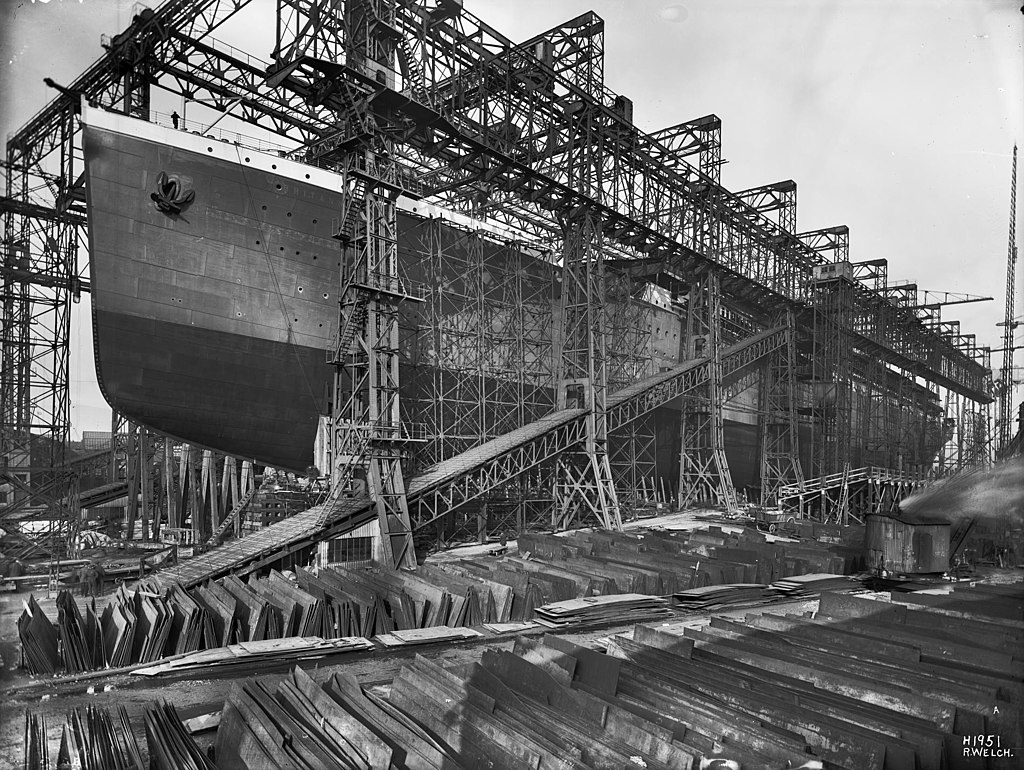
After the sinking of the Titanic in April 1912, construction work on the Britannic at the Harland & Wolff shipyard was suspended for the duration of the investigations. The safety standards adopted in the aftermath demanded significant technical modifications, and the keel was not laid until November 30, 1911 – more than two and a half years after the Titanic.
Another Unsinkable?
The exterior remained almost untouched, with the famous four funnels and the familiar superstructure, but the safety upgrades required a half-meter extension of the beam above the Titanic’s 28.2 m. The boiler and engine-room sections got a second inner plating, while six crucial bulkheads now reached to B-deck, ensuring buoyancy with up to six flooded compartments. An additional bulkhead built into the generator room upped the number of watertight compartments on the Britannic to 17.
Although most of the machinery was standard for the class, the increased boiler heating-surface and a more efficient turbine bumped up the power from 46,000 hp (34,000kW) on the Titanic and Olympic to 50,000 hp (37,000 kW). While a 16,000 hp (12,000 kW)turbine powered the center propeller of each sister ship, the one on the Britannic had 18,000 hp (13,000 kW), compensating for the wider beam.
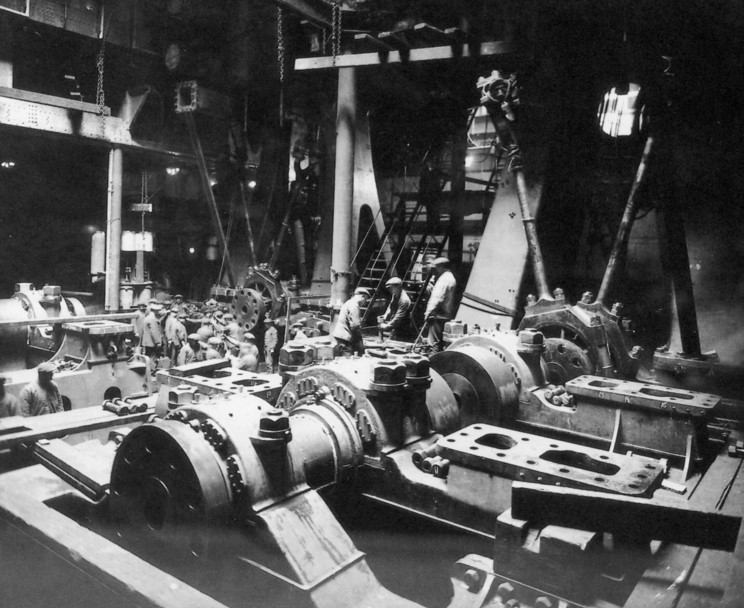
Unlike the Titanic, which only launched lifeboats manually, the Britannic’s giant davits were powered by fast electric motors, but in the process of turning the ship into a floating hospital, only five out of the eight planned found their way from blueprint to reality. Another breakthrough was that now all lifeboats could be launched, even with the ship listing heavily to one side. In such cases in the past, boats across from the listing side had been useless, but the new davits could move over and pick all of them up, bringing each one where it was needed. The 48 lifeboats ensured a place for all 3,600 passengers and staff on board. Such technical challenges further delayed construction, the ship only entering service on 23 December 1915.
Luxury and Other Unfulfilled Dreams
The interior was planned to exceed the Titanic and the Olympic in opulence and comfort, with more common spaces, an additional elevator for first-class passengers, a beauty salon, a gym for the second class, and a generous children’s playroom. First-class suites were even more spacious, with almost all accommodation in this category having access to private toilets and bathrooms – a level of luxury offered by no other ship of the time.
Don’t forget to visit The Shipyard Shop!



The à-la-carte restaurant on the B-deck was to stretch across the entire width of the ship, its large anteroom on the starboard side directly accessible via the aft staircase. In the first-class smoking salon, wall-panels with gold-plated carvings and a stained-glass dome were to replace the mother-of-pearl inlaid mahogany on the Titanic and the Olympic. A self-playing philharmonic organ, made in Germany by M. Welte & Sons, completed the luxurious atmosphere.

But world wars have no use for luxury, and much of these interior fittings were put away in storage, only to be auctioned in later years.
For King and Country
As the number of wounded in the Gallipoli Campaign soared, so did the demand for hospital ships. On November 13, 1915, White Star’s brand-new liner was requisitioned by the Royal Navy, changing its prefix from RMS (Royal Mail Ship) to HMHS (His Majesty’s Hospital Ship). She was painted white, with a horizontal green line along the hull and three red crosses on each side.
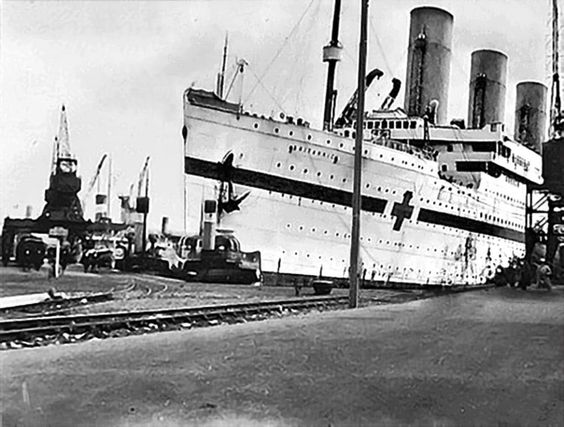
The upper decks now fitted 3,309 spartan beds, the first-class dining and reception rooms housed operating theaters, and the cabins on deck B became living quarters for the medical staff. Designed as a luxury ocean liner, the Britannic debuted as the world’s best-equipped hospital ship.
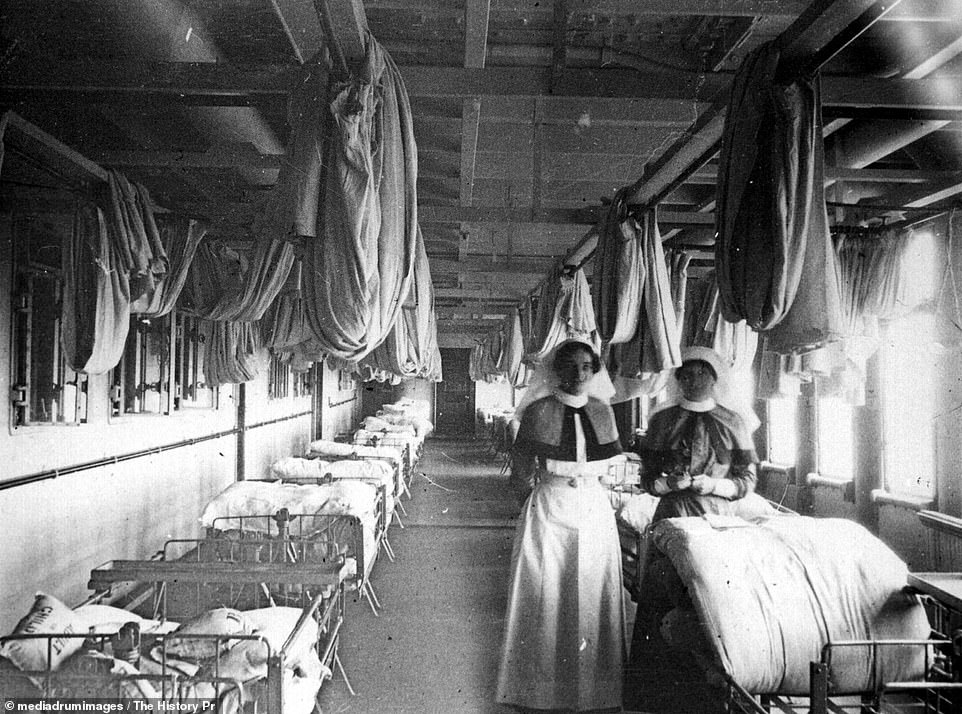
Journey to the Bottom
The end came shortly after 8 o’clock on the morning of November 21, 1916, while the Britannic was on her way to pick up 2,500 wounded from the Battle of the Dardanelles. A German mine tore a hole in the front of the hull, sending the 269-meter long giant to the bottom of the Aegean in less than an hour. Captain Charles Alfred Bartlett made a doomed attempt to ground the ship, but the failed maneuver only forced even more water in. At 9:07, the last of her disappeared beneath the waves.
Despite its improved bulkheads, the Britannic sank much faster than the Titanic. One possible explanation is that the explosion took place during the change of guard. All watertight doors in the bulkheads were open for convenience, as access to the compartments was otherwise only possible via emergency ladders. An attempt was made afterwards to close the doors, but in vain – many of them were bent and distorted from the shock wave. The water ingress could no longer be limited to the damaged compartments.
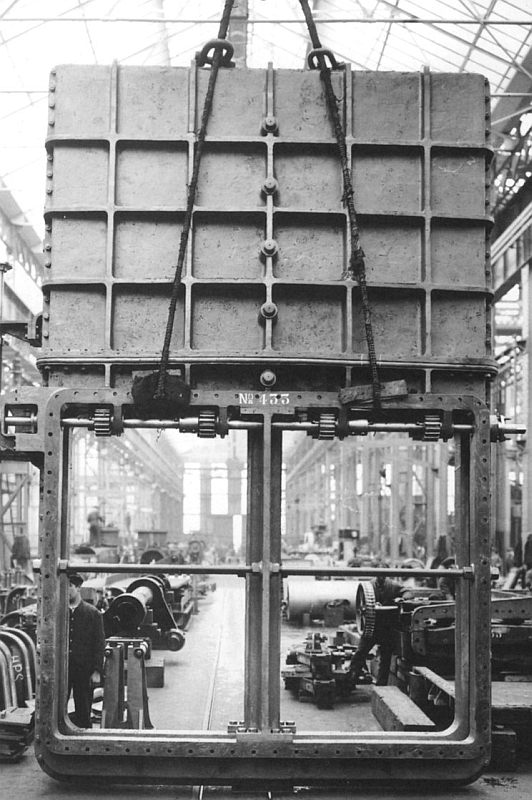
Numerous open portholes made the situation even worse, letting in too much water into the rear compartments and causing asymmetrical flooding, which further accelerated the sinking. The portholes remain something of a mystery to this day, as keeping them open was against all wartime regulations.
Out of the 1,065 on board, 30 died and 40 were injured. Most casualties occurred as two lifeboats were launched without the captain’s permission, while the engines were still running. The boats came too close to the stern, where a propeller protruded out of the water, sucking them in and hacking them to splinters.
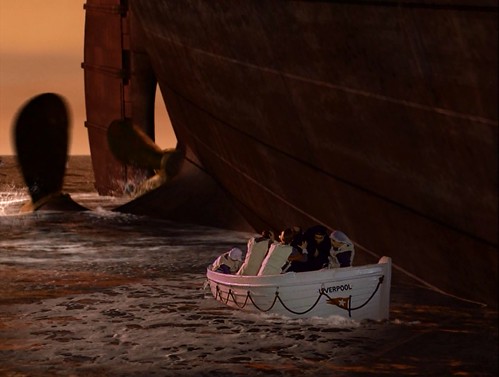
Among the survivors of this gruesome scene was nurse Violet Jessop, who had famously survived the Olympic’s collision with the British cruiser Hawke in 1911, and the Titanic disaster a year later. She later reported jumping out the moment before the rotating blades tore into the boat. Although she bumped her head against the hull, she still managed to surface away from the propellers and float to safety.
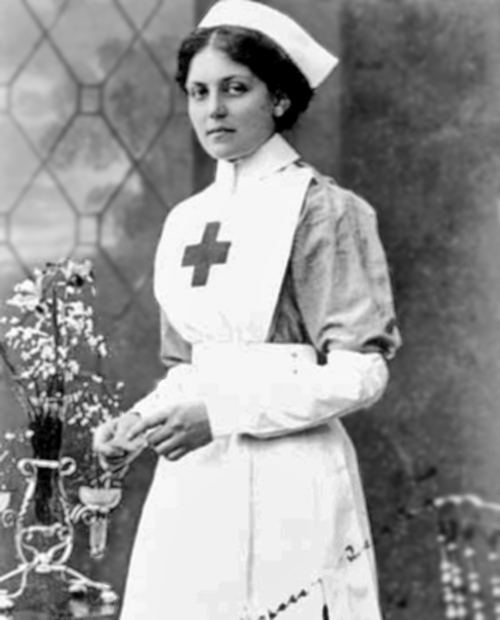
Except for this tragic incident, evacuation proceeded in a quick and organized manner, proving that the improved safety measures had been successful. Legend has it that when the water reached the bridge, the only three remaining people aboard – Assistant Commander Dyke, Chief Engineer Fleming and Captain Barlett – casually walked off into the water and swam to the nearest lifeboats.
In her final moments, the Britannic listed heavily to starboard, then capsized, her funnels breaking one after the other as they plunged into the water. She went down bow first, crashing into the bottom of the sea. The stern remained out of the shallow water, towering some 45 meters above the waterline. As Violet Jessop wrote in her diary later:
“She dipped her head a little, then a little lower and still lower. All the deck machinery fell into the sea like a child’s toys. Then she took a fearful plunge, her stern rearing hundreds of feet into the air until with a final roar, she disappeared into the depths, the noise of her going resounding through the water with undreamt-of violence….”
Here Rests a Legend That Never Was
The Britannic was the largest vessel sunk in World War I. She lies on her starboard side and shows no damage except for the bent bow – the railing, the bridge, and the interior are still intact. The professional divers, who explored the wreck, reported seeing artfully made wall tiles, the captain’s bathtub, a spiral staircase disappearing into the depths of the sea, and the carvings of the salon glowing in the light of the diving lamps.
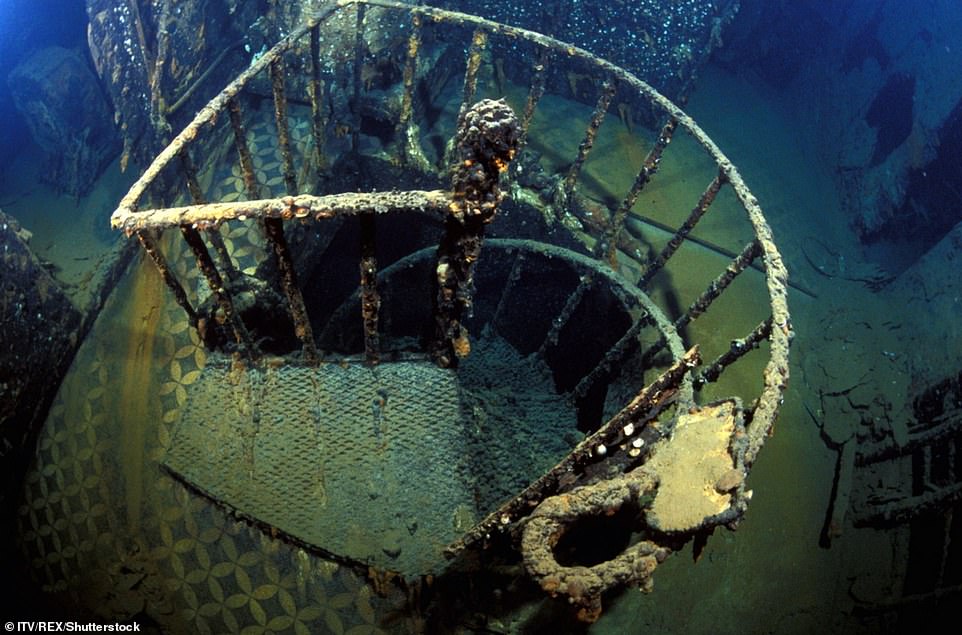
She lies between the islands of Kea and Makrónissos, at a depth of around 120 meters – beyond the reach of amateur divers. Fifteen minutes down there take a three-hour ascent, each additional minute requiring twenty more for decompression. But depth isn’t the only barrier to divers – anyone interested needs the approval of British author and filmmaker Simon Mills, who bought the wreck in 1996 for £15,000.
Final Thoughts
The Britannic hasn’t captured the hearts of people all over the world – precious few even know about her existence and role in history – but she was the last in a noble line of titans and deserves more attention than she gets. Not all greatness is glamorous – instead of aristocrats and mysterious tycoons, she carried countless poor souls who barely escaped the massacre of Gallipoli, many condemned to a life of disability and disappointment. Instead of luxury and opulence, she offered much-needed shelter from the global death-machine that was to define her age, as well as ours, far more than architectural styles, cocktail recipes, and novel forms of entertainment. For those brief months of faithful service – let’s take a moment and remember the HMHS Britannic.
The Shipyard
